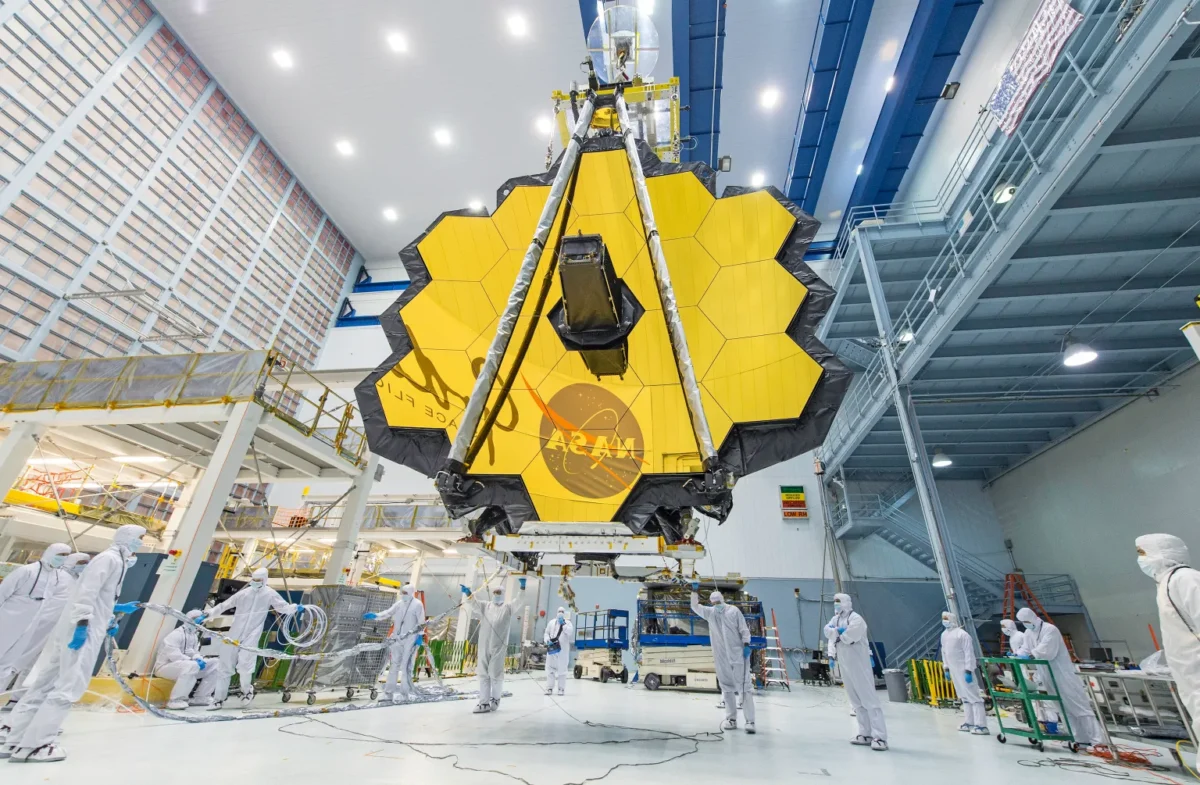Table of Contents
The Space Telescope Science Institute has announced the upcoming Cycle 3 General Observer (GO) Programs for NASA’s James Webb Space Telescope (JWST) on February 29th.
The program will span the next two years, and 253 GO programs are selected for this duration. These programs will use approximately 5,500 hours of JWST prime time for conducting various cosmic explorations.
Space.com says Cycle 3 initiatives are worth $10 billion, which will further build two years of scientific advancements that began in 2022.
The JWST’s upcoming missions include exomoons surrounding exoplanets, supermassive black holes, and distant galaxies. These studies will reveal the details of universe expansion and the force that drives this movement, dark energy.
The Search for Exomoons
Professor David Kipping and his team from Columbia University will search for extra-solar moons called “exomoons” outside the solar system.
The team will look for moons around the exoplanet Kepler-167e, located 1.115 light-years from Earth. It is a gas giant around the size and mass of Jupiter. They will study Kepler-167e with the help of JWST’s Near Infrared Imager and Slitless Spectrograph (NIRISS).
Exomoons are hard to detect in the vast cosmos since they block significantly less light than their exoplanets. In such cases, using the same technique for detecting exoplanets is challenging.
Exomoons are extremely small and will be detected when transiting the exoplanet. During the transit, equipment will detect an obstruction from which the scientists reverse calculate if the exoplanet has given rise to an exomoon.
Cycle 3 GO programs also include the exploration of several exoplanets that can support life on them. One of the projects that studies the exoplanet TOI-4881b will use JWST’s Mid-Infrared Instrument (MIRI) to study its atmosphere for the same.
Exploring Supermassive Black Holes
The JWST’s Cycle 3 program will also explore the realm of supermassive black holes. These programs will investigate quasars and black holes in the universe’s early stages.
Scientists believe most of the galaxies in the universe have black holes, which have influenced the growth of the galaxies. JWST’s observations deepen our understanding of black hole growth. By using the MIRI, we can answer this puzzle.
The JWST will also help understand the first stars and early galaxies using its ability to observe infrared light.
Upcoming Missions of JWST
Study of TRAPPIST-1 Exoplanets
The TRAPPIST-1 system has seven rocky Earth-like exoplanets that orbit a red dwarf star. Out of those seven, three are present in habitable zones. In Early 2024, JWST will observe the atmosphere of these exoplanets to detect if they can support life as we know it.
Observing the earliest galaxies
JWST’s main objective is to observe the galaxies formed in the early universe (after the Big Bang). It can observe distant objects by detecting the light traveling towards us from the universe. In mid-2024, it will help us investigate the evolution of the universe.
Study of Jupiter’s Great Red Spot
JWST’s targets also include the study of planets beyond Mars. In late 2024, JWST will observe Jupiter’s iconic storm called the Great Red Spot and give insights into its structure, chemistry, and dynamics.
Study of SMACS 0723 Galaxy Cluster
SMACS 0723 is a galaxy cluster located four billion light years away from the Earth. JWST has detected the brightest X-ray wavelengths from this cluster. In early 2025, JWST will further observe this cluster and give insights into its mass distribution and evolution.
Study of Titan’s Atmosphere
In mid-2025, JWST will focus on studying the atmosphere of Titan, Saturn’s largest moon. It will observe and give information about Titan’s atmosphere and surface.
NASA will also roll out the call for Cycle 4 GO proposals from August 1, 2024, to October 16, 2024. The Telescope Allocation Committee (TAC) will review the proposals, and the selections will come out on March 5, 2025. The programs will begin in July next year.
Read More: NASA

1 Comment
I thought you did a great job here. The language is excellent and the picture is tasteful, but you come across as nervous about what you might say next. If you preserve this walk, I have no doubt that I will return more often.